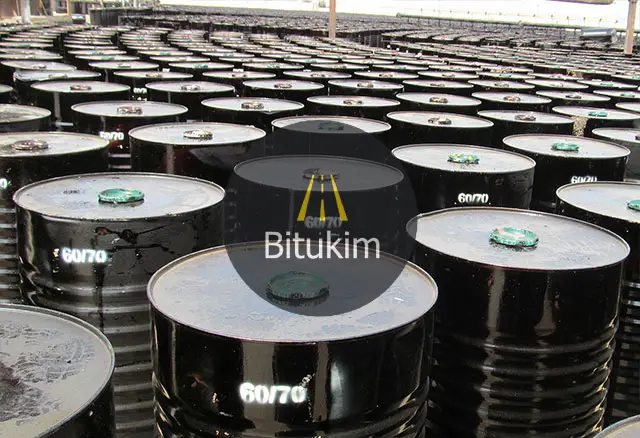Bitumen 60/70 in Different Weather Conditions

Bitumen 60/70 is a widely used grade of bitumen known for its balanced properties, making it suitable for various applications in road construction, asphalt production, and more. Understanding its performance across different weather conditions is crucial for ensuring optimal results and longevity of infrastructure projects. Here’s an in-depth look at how Bitumen 60/70 performs in various weather scenarios.
1. Performance in Hot Weather
a. Temperature Sensitivity
- Behavior: Bitumen 60/70, with its medium hardness, can soften under high temperatures. In extremely hot weather, it may become more pliable and susceptible to deformation, such as rutting or shoving, especially under heavy traffic loads.
- Considerations: To mitigate these effects, it is often mixed with polymers or additives to improve its high-temperature stability. Proper pavement design and construction practices are essential to handle hot weather conditions effectively.
b. Rutting and Deformation
- Impact: High temperatures can cause the bitumen to lose its rigidity, leading to rutting in the pavement. Bitumen 60/70 might experience these issues if the ambient temperatures exceed its optimal performance range.
- Solutions: Utilizing a mix design that includes modifiers or selecting a harder grade bitumen can help reduce the risk of rutting in high-temperature environments.
2. Performance in Cold Weather
a. Brittleness and Cracking
- Behavior: In cold weather, Bitumen 60/70 can become brittle and prone to cracking due to its medium hardness. The bitumen may not provide adequate flexibility in very low temperatures, leading to surface cracks.
- Considerations: To address this, additives such as anti-stripping agents or softer bitumen grades can be used to enhance the flexibility and resistance to cracking in cold conditions.
b. Low-Temperature Performance
- Impact: The performance of Bitumen 60/70 in cold weather is generally acceptable but may not be optimal compared to softer grades like Bitumen 85/100. The material’s ability to resist low-temperature induced stresses is crucial for preventing surface damage.
- Solutions: Implementing appropriate pavement designs and using bitumen modifiers can improve performance in colder climates.
3. Performance in Wet Conditions
a. Water Sensitivity
- Behavior: Bitumen 60/70 is generally resistant to water damage, but prolonged exposure to moisture can affect its adhesive properties and lead to issues such as stripping, where the bitumen separates from the aggregate.
- Considerations: Proper mix design and the use of water-resistant additives can help enhance the moisture resistance of Bitumen 60/70.
b. Skid Resistance
- Impact: In wet conditions, maintaining adequate skid resistance is important for road safety. Bitumen 60/70 typically provides good skid resistance when combined with the right aggregate and mix design.
- Solutions: Regular maintenance and ensuring proper surface texture can help maintain safety and performance in wet conditions.
4. Performance in Dry Conditions
a. Stability and Hardening
- Behavior: Bitumen 60/70 performs well in dry conditions, maintaining its stability and structural integrity. However, extended exposure to UV radiation and high temperatures may cause hardening over time.
- Considerations: Using bitumen with appropriate additives can help protect against UV damage and prevent premature hardening.
b. Aging and Degradation
- Impact: Prolonged exposure to dry conditions and sunlight can lead to aging and oxidation of Bitumen 60/70, affecting its performance.
- Solutions: Regular maintenance and using bitumen with anti-aging additives can extend the life of the pavement.
5. Performance in Variable Weather Conditions
a. Seasonal Changes
- Behavior: Bitumen 60/70 is designed to handle moderate variations in weather but may not be as effective in extreme or rapid temperature fluctuations.
- Considerations: Pavement designs that account for seasonal changes and include performance-based testing can ensure that Bitumen 60/70 maintains its effectiveness throughout the year.
b. Climate Adaptability
- Impact: Bitumen 60/70 is adaptable to various climates, but its performance can be enhanced by selecting the appropriate grade and mix design for specific weather conditions.
- Solutions: Tailoring the bitumen grade and mix to local climate conditions can improve overall performance and longevity.

